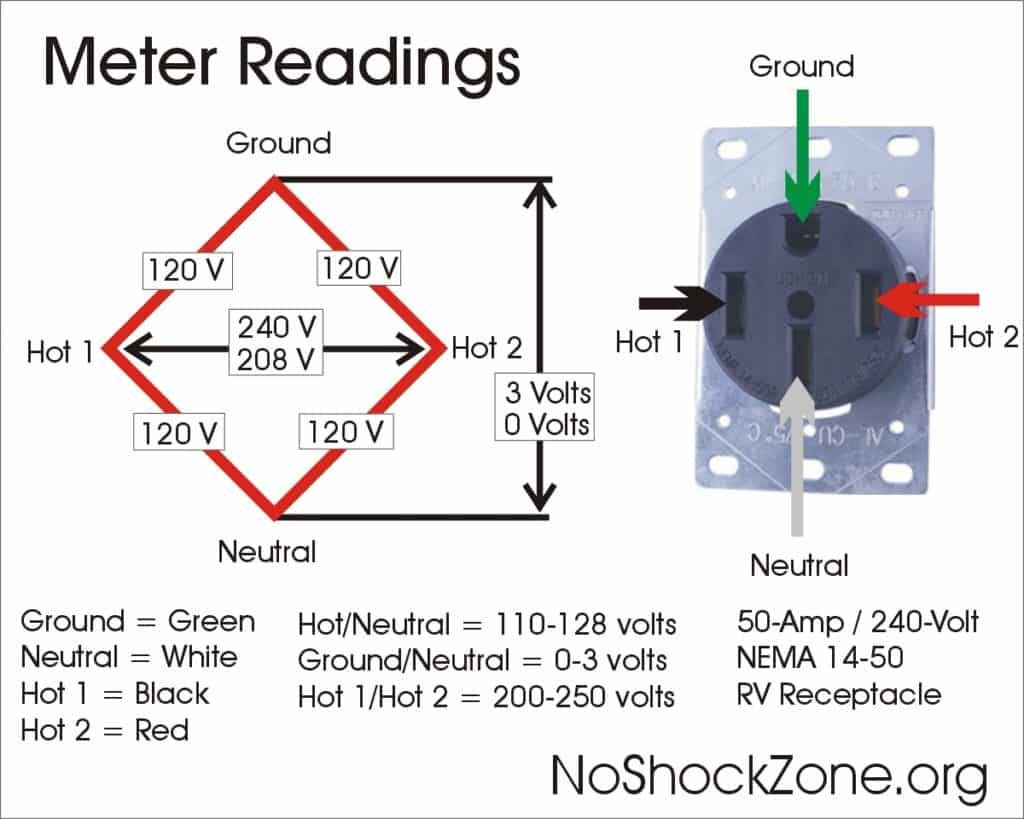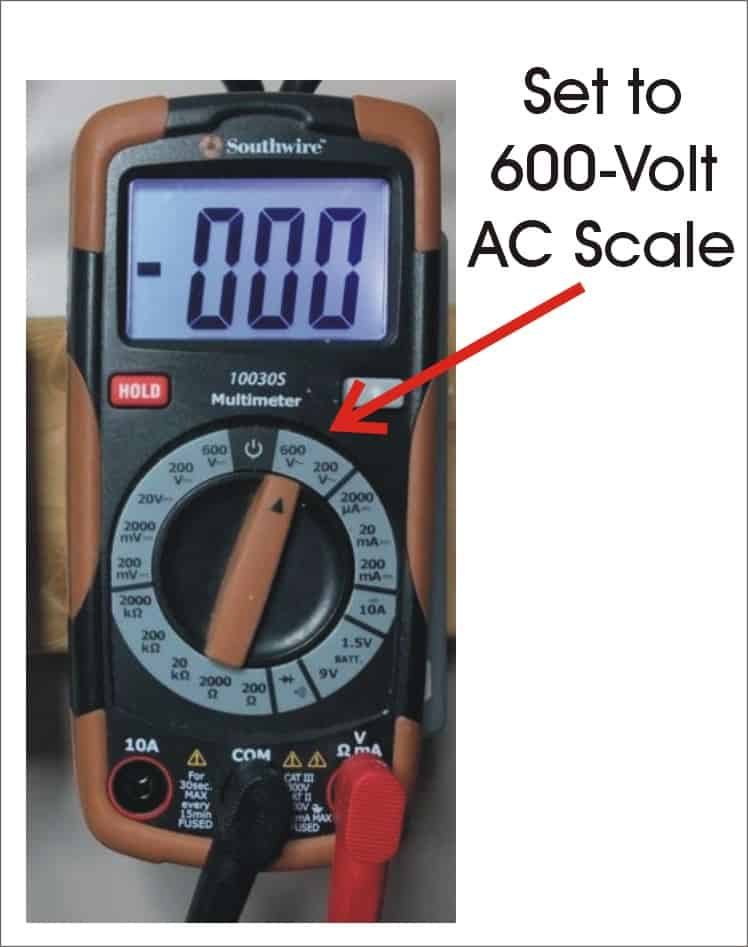Is my new 50-amp outlet wired correctly?
A reader asks why he's measuring 240-volts on a new 50-amp outlet when his RV has 120-volt appliances
Dear Mike,
I have a 50 amp outlet I had put in at my house, and when I use a meter to measure from either hot to the neutral it reads 120 volts, but measuring between both hots it reads 240 volts. Is this outlet wired correctly? —Craig
Dear Craig,
Yes, that’s correct. And here’s how your 50-amp RV outlet must be wired.
Most consumers don’t realize that we all have 240 volts AC coming into our homes in the USA, but it’s split in half by the neutral. It’s called “Split-Phase”, because a single power line phase of 240-volts is split in half by the neutral into Hot-1 and Hot-2.
The advantage of this type of electrical service is that small 120-volt loads that don’t need a lot of power (such as light bulbs) are connected between neutral and Hot-1 or Hot-2. While large appliances that need a lot of power (electric ovens or water heaters) are wired for 240-volts and are connected between Hot-1 and Hot-2.
Why did they do this?
The biggest advantage of split-phase 120/204-volt service is that the neutral only carries the difference in current between Hot-1 and Hot-2. So if Hot-1 carries 40 amps of current, and Hot-2 carries 30 amps of current, then the neutral only has 10 return amperes of current. And that also reduces voltage drop on long runs if Hot-1 and Hot-2 are reasonably balanced.
What should a 50-amp RV outlet measure?
So your 50-amp RV outlet from Neutral to Hot-1 or Hot-2 should measure around 120 volts, and measuring from Hot-1 to Hot-2 should measure around either a nominal 240 volts or 208 volts (depending on if you’re wired into a single-phase panel or a 3-phase service panel). This is also why you should always set your meter to higher than the 200-volt scale. Most of the time the 600-volt setting is best for outlet testing.
Note that Ground to Neutral should measure very close to zero volts if there’s no current load on the panel, but can go up to 3 volts or a little more during times of high current draw in the panel and still be within code compliance.
What about zero volts from Hot-1 to Hot-2?
However, if you measure 120-volts from Neutral to each Hot-1 or Hot-2, and 0-volts between Hot-1 and Hot-2, then that outlet has been wired as single-pole rather than two-pole. That’s a code violation that can cause your neutral to overheat and meltdown. See the results below!
A single-pole connection on a 50-amp RV outlet makes the current on the neutral additive rather than subtractive as in a 2-pole service. So 40 amps of current on Hot-1 plus 30-amps on Hot-2 will add up to 70-amps on the neutral, which can cause your neutral contacts and wiring to overheat and melt down. Then your shore power cord can look something like the one above. .
What’s this 208-volt thing?
That’s an entire article with some advanced concepts, so I’ll cover it later. In the meantime, here’s my digital scope showing what 3-phase 208/120-volt looks like. It’s 3-phases of 120-volts each to neutral with a phase shift of 120 degrees, rather than 2-poles of 120-volts with a 180 degree phase shift. So you’ll measure 208 volts between any 2 of the 3 phases. This is standard industrial power in the US.
And yes, code now allows 3-phase 120/208-volt Wye service to be wired as 2-phase power directly to your 50-amp pedestal at campgrounds. More on this later.
Let’s play safe out there… Mike








